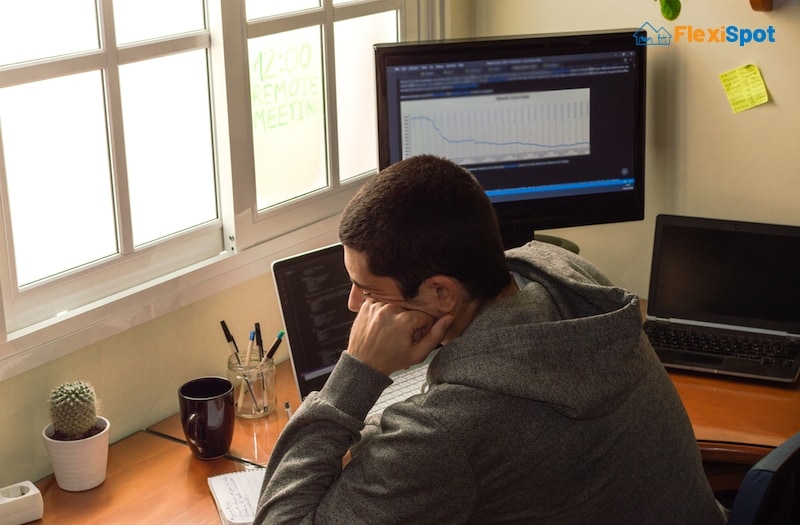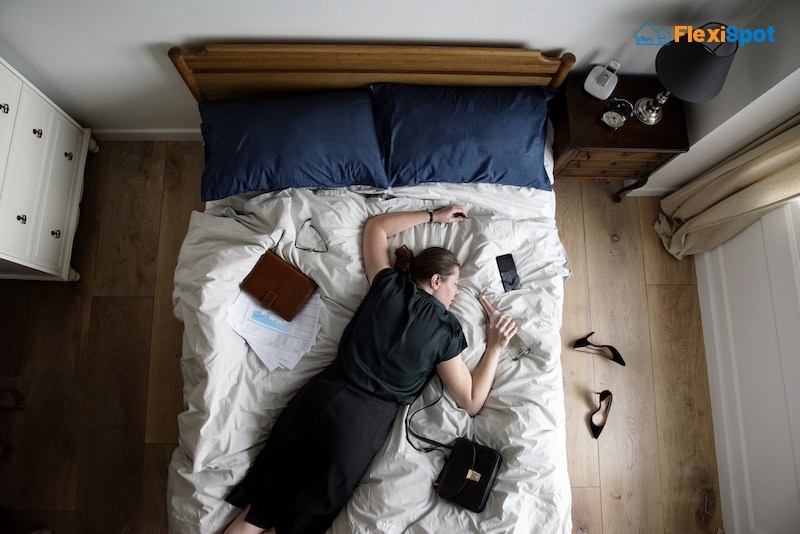What was once a perk is now a norm – yes, we're talking about the work-at-home facility that most (nearly all) employers had to offer to their employees following the COVID-19 pandemic. The World Health Organization (WHO) gave strict guidelines about social distancing and staying at home when the COVID-19 first emerged. The fear and panic were real. What made the situation scarier was the fact that nobody could tell, not even the experts, when it would all be over and when everyone could return to their normal lives.
In a situation like this where nobody could go to work, the employers had to switch to a remote working model where employees were provided the necessary equipment and basic facilities to facilitate them while they continued working from home.
While work from home did save many companies from drowning and closing as it kept the work going (not at the required pace, though), it also presented various challenges for both the employees and employers. Now, when it's been nearly 2 years since the pandemic shook the entire world, we'restarting to see the downsides of the work-at-home model, which has got us all thinking if employers would want to continue with it for an indefinite future.

Challenges of the Work-at-Home Model
When we say the work-at-home model has been challenging for both employees and employers, we don't say it for no reason. There are numerous reasons why it's been harder than you know.
Lack of Communication
One of the biggest downsides of remote working is the lack of communication between the teammates. Employees could chat and discuss work at the office and sort things out together. However, that's not the case when everyone's working from home. All communication takes place majorly through emails, which isn't as effective as face-to-face conversations. This lack of communication results in a higher incidence of errors in work and missed deadlines.
Safety of Data
Employers had to provide their employees access to the company database so that they could access the information they needed to work. Employers could ensure the company data was secure when everyone was working from the office, but now that the data is accessible from all off-site computers (employees' personal laptops and computers at home), it's nearly impossible for the employer to ensure the data doesn't get leaked and the company security and confidentiality don't get compromised.
Employee Safety
Another major challenge is to ensure employee safety. Remote workers may face many dangers when working from home or another location. Office spaces, however, are designed carefully with employee safety in mind. Since it's an employer's responsibility to ensure their employees' safety during work hours, it gets extremely difficult to do so when the employees are scattered all over the city, and even across the state. The inability of the employer to ensure the safety of all the employees from working from home can put the employees in dangerous situations at home, and this is exactly what we’ll be talking about in the next section.
Dangerous Work-at-Home Situations
Nobody had imagined that they'd be working from home for an indefinite duration, and because of this reason, nobody ever thought of designing a home that was suited for work. People involved in desk jobs that require them to sit in front of the computer screens might still be able to manage work and safety, but those who’ve got real physical work to do at home using machinery and equipment are at a high risk of getting injured.
Let's have a look at some of the most dangerous work-at-home situations so that you can stay alert and work with your employers to ensure your safety more effectively.

Poor Ergonomics
Workstations at the office are designed to enable workers to work comfortably. All employees are provided with proper workstations, comfortable office chairs, and footrests, and appropriate lighting. However, that's not the case when you're working from home. Most people lay down on the couches or work from their beds which means that they're sitting in a poor posture most of the time. Even the lights at home aren't suitable for work. This puts the employer at the risk of developing long-lasting musculoskeletal disorders (MSDs) and eyesight problems in the long run.
When you sit in an incorrect posture for extended durations, the muscles of your lower back are constantly under stress. They get fatigued, which leads to pain in the lower back. Other consequences of incorrect posture and poor ergonomics include neck and shoulder pain, headache, and exhaustion.
Poor lighting can put a strain on the eyes and can lead to the weakening of eyesight. One of the first signs that poor lighting has started to get better in your eyesight is when you start complaining about a constant headache.
If you don't do something about ergonomics when working from home, it won't be long before you get too sick to work. Muscle fatigue will become widespread and even lead to muscle spasms, which can eventually cause compression of the nerves in the lower back and legs. One of the most dangerous possibilities is Sciatica. If that happens, you'll be in no position to continue working unless you seek proper treatment.
To save yourself from getting into such a dangerous, or should we say scary situation, invest in ergonomic furniture for your home office. The FlexiSpot Standing Desks might just be what you need to ensure you don't stay seated in an incorrect posture all day long!
Muscle Stiffness
Another situation that you may find yourself in if you're working from home is muscle stiffness. Your body feels stiffer, and you find it harder to do even the simplest of tasks like stretching or bending over to grab something. This is due to a serious lack of physical activity. When you're working from the office, you take frequent walk breaks. Whether it's one from your workstation to a colleague's or to the terrace for a smoking break or to another floor where the IT department or your manager is seated, you walk a lot. But that's not the case when you're at home all day long.
The lack of physical activity leads to the stiffness of muscles, resulting in a lack of flexibility and difficulty moving. One way to keep that from happening is to stretch every few minutes. Stand up from your couch or bed, wherever it is you're working from, and stretch your body to ensure the muscles get stretched and warmed up.

Slips and Falls
Offices are designed very carefully. All safety hazards are addressed, and employee safety is ensured. There are anti-slip tapes on the staircases. There are anti-slip mats in the bathrooms as well. However, you don’t have any such arrangements at home. The chances of you slipping, falling, or tripping are quite high. You might lose balance while talking on the phone while walking down the stairs. Or you might slip in the bathroom in a hurry to receive the ringing phone outside. You may even trip over your children's toys that are lying all around the house. All of these possibilities can lead to serious injuries like fractures and muscle rupture that may put you on bed rest.
Electric Risks
Electricity-related situations are the most dangerous of all work-at-home situations. We can't stop stressing the fact that your homes aren't designed to serve the purpose of a full-time office. You don't even have the right equipment at home that's suitable for rough office use. Let's say your laptop starts getting heated up after 3 to 4 hours of being on. If you don't have a cooling fan base for your laptop, your laptop may get heated up so much that a circuit or wiring sparks and burns. In case there's a liquid lying around, the situation can get out of control. You may even forget that your laptop charger is plugged in, and you may go out of home for a few hours. Do you know what can happen? It may heat up and catch fire. Not all homes have fire alarms or water sprinkler systems installed.

Psychological Burnout
Not many people consider psychological burnout a dangerous work-at-home situation, but we do, and we've got all the right reasons for it. When you're working from home, there's no distinct separation between your work and personal life. You're literally working round the clock. It's like your office never closes.
Over time, it'll lead to burnout, and that'll make it very difficult for you to work to the best of your efficiency. It'll start to show in your attitude, as you may constantly feel annoyed or irritated.. It'll then start affecting your personal relations and life, and eventually, it'll start to impact your personality. Psychological burnout is worse than physical burnout because you can get over the physical burnout by resting and relaxing, but psychological effects aren't so easy to reverse.
Work-at-home is definitely a perk as it lets you work from the comfort of your home, spend time with family, and save money that you would otherwise have to spend on your everyday commute. But there's another side of this, and that's not the prettiest. Make sure you're taking good care of yourself, both physically and psychologically. Keep your eyes open for any lingering risks that may put your or your family's safety at risk. As long as you're doing that, we don't think there's much for you to worry about.

